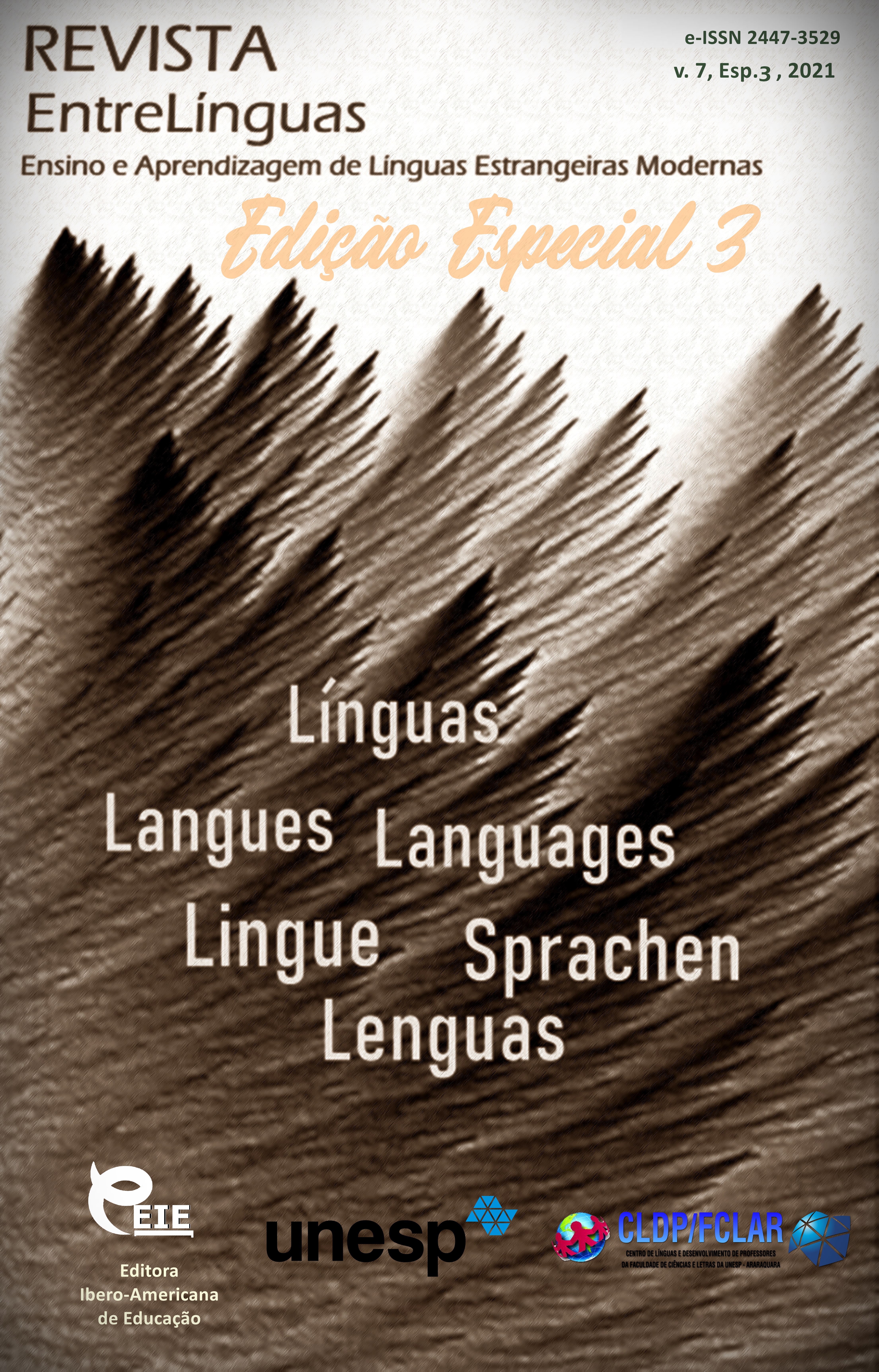The linguistic features and translation specifications of the novel generation “p” by Victor Pelevin
DOI:
https://doi.org/10.29051/el.v7iesp.3.15730Keywords:
Language, Translation, Postmodernism, Victor Pelevin, Language gameAbstract
The authors focus on the linguistic features characterising a postmodern novel on the example of the literary work Generation “P” by Victor Pelevin. Firstly, the impossibility of new style invention and the idea of the necessity of different styles combination are highlighted: stylistically marked words such as jargon words, low-colloquial lexis, poetic and archaic words, idioms, and even scientific terms all together create a unique style of the novel. Secondly, the implementation levels of the language game are considered. Two levels of language game representation are analysed: the mix of styles and the loss of figurativeness by phraseological units. The intertextual context of the novel and a common method of postmodernism known as “rewriting” are regarded in the article. A phenomenon of language game and intertextuality are analyzed based on the translation of the novel by Andrew Bromfield.
Downloads
References
GENETTE, G. Palimpsestes. La litterature au second degree. Le Seuil, 1997.
GOLIKOVA, G.; POMORTSEVA, N. The phenomenon of extension/contraction of the text: Images of nature in Ch. Brontë's novel janeeyre and its screen adaptations. Journal of Language and Literature, v. 5, n. 3, p. 153-157. DOI: doi.org/10.7813/jll.2014/5-3/282014
KHISAMOVA, V. N.; MOTYGOULLINA, Z. A.; MOULLAGALIEV, N. K. Expression of the fiction in the material of “The catcher in the rye” by David Salinger and its translation into the Tatar language. Journal of Language and Literature, v. 3, n. 6, p. 140-143. DOI: doi.org/10.7813/jll.2015/6-3/322015
KUGAEVSKIJ, A. Hudozhestvennaya interpretaciya tovarnogo diskursa v romane Viktora Pelevina Generation “P” [“Artistic interpretation of commodity discourse in the novel Generation “P” by Victor Pelevin”]. Kritika i semiotika, v. 9, p. 144-157, 2006.
LIPOVECKIJ, M. N. Russkij postmodernism [Russian postmodernism]. 1997.
MACÉ, M. L’essailitteraire, devant le temps, Cahiers de Narratologie, Prose d'idees: formesetsavoirs. Cahiers de géographie du Québec, 2008Available: https://journals.openedition.org/narratologie/499#quotation. Access: 20 Nov. 2020.
NESTEROVA, N. M.; POPOVA, Y. K. O specifike perevoda postmodernistskih hudozhestvennyh tekstov (na material proizvedenij A.Bajett i ih perevodovnarusskij yazyk) [On the specifics of the translation of postmodern artistic texts (based on the works of A. Bayett and their translations into Russian)]. Filologicheskie nauki. Voprosy teorii i praktiki, v. 2, n. 1, p. 151-157, 2017.
PELEVIN, V. Babylon. London: Faber, 2001.
PELEVIN, V. Generation “P”. EHKSMO. 2011.
POPOVA, E. Y. Literaturnye precedentnye fenomeny kak sredstva ehksplikacii postmodernistskih motivov illyuzornosti i absurdnostimira v tvorchestve V.Pelevina [Literary precedent phenomena as a means of explication of postmodernist motifs of the illusion and absurdity of the world in the work of V.Pelevin]. Seriya “Filologicheskie nauki”, v. 3, p. 9-19, 2011.
SOBOLEVA, N. P.; ZUBKOVA, O. S. Metaphor translation: russian and english-language taglines for feature-length films. Journal of Sociology and Social Anthropology, v. 10, n. 4, p. 192-197, 2019. DOI: doi.org/10.31901/24566764.2019/10.04.3112019
VASILOVA, L. R. et al. Analysis of translation of figures of speech into english, spanish and turkish. Opcion, p. 934-948, 2019.
ZHOLKOVSKIJ, A. K. Bluzhdayushchiesny: stat'I raznyhlet [Wandering dreams: articles from different years]. Azbuka: Azbuka-Attikus, 2016.
Published
How to Cite
Issue
Section
License

This work is licensed under a Creative Commons Attribution-NonCommercial-ShareAlike 4.0 International License.
Os manuscritos aceitos e publicados são de propriedade da Revista EntreLínguas. Os artigos publicados e as referências citadas na Revista EntreLínguas são de inteira responsabilidade de seus autores.
Transferência de direitos autorais – autorização para publicação
Caso o artigo submetido seja aprovado para publicação, já fica acordado que o(s) autor(es) autoriza(m) a UNESP a reproduzi-lo e publicá-lo na EntreLínguas, entendendo-se os termos “reprodução” e “publicação” conforme definição respectivamente dos incisos VI e I do artigo 5° da Lei 9610/98. O artigo poderá ser acessado pela rede mundial de computadores (Internet), sendo permitidas, a título gratuito, a consulta e a reprodução de exemplar do artigo para uso próprio de quem a consulta, desde que haja a citação ao texto consultado. Essa autorização de publicação 328 EntreLínguas, Araraquara, v. 1, n .2, p. 323-328, jul./dez. 2015 não tem limitação de tempo, ficando a UNESP responsável pela manutenção da identificação do(s) autor(es) do artigo. Os artigos publicados e as referências citadas na Revista EntreLínguas são de inteira responsabilidade de seus autores.











